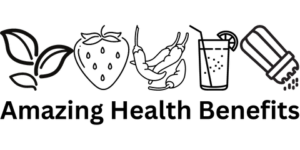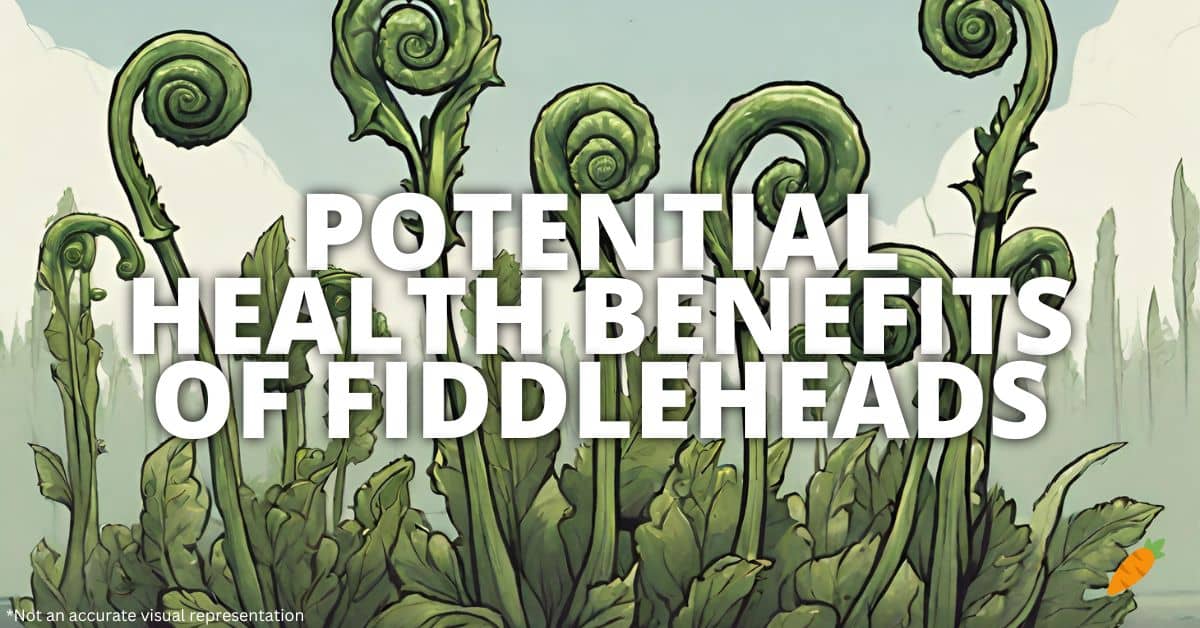Fiddleheads are the furled fronds of young ferns, harvested for a few weeks in early spring before they unfurl.
This seasonal delicacy is renowned not just for its unique flavor and texture but also for its nutritional prowess, being low in calories yet dense in nutrients.
Fiddleheads are an excellent source of vitamins A and C, minerals such as iron and potassium, and antioxidants, contributing to various health benefits.
Their limited availability makes them a sought-after ingredient in seasonal cuisine, encouraging foraging and local farming practices.
Embracing fiddleheads in your diet introduces a new dimension of taste and nutrition, perfectly aligning with the spirit of spring renewal.
1. Fiddleheads and Blood Pressure: A Natural Solution
The high potassium content in fiddleheads plays a critical role in managing blood pressure levels, acting as a natural counterbalance to sodium.
By promoting vasodilation, or the widening of blood vessels, potassium helps in reducing the strain on the cardiovascular system, thus mitigating the risk of hypertension.
Fiddleheads also contain magnesium, another mineral known for its blood pressure-lowering effects.
Regular consumption of fiddleheads, with their nutrient-rich profile, can be a delicious way to support cardiovascular health.
Including these green spirals in your diet can offer a natural pathway to maintaining optimal blood pressure, contributing to a heart-healthy lifestyle.
📙 Potential Health Benefits Of Lotus Leaf
2. Boosting the Immune System with Fiddleheads
Fiddleheads are rich in Vitamin C, a vital nutrient for strengthening the immune system and enhancing the body’s resistance against infections.
This antioxidant vitamin stimulates the production of white blood cells, which are crucial for fighting off pathogens.
Besides Vitamin C, fiddleheads also provide a good amount of Vitamin A, another immune-boosting nutrient that maintains the health of the skin and mucous membranes, serving as a first line of defense against bacteria and viruses.
The combination of these vitamins, along with the ferns’ mineral content, can significantly bolster the immune response.
Integrating fiddleheads into meals during their season not only adds variety to your diet but also provides a timely boost to your immune system.
📙 Potential Health Benefits Of Savoy Cabbage
3. Digestive Health and Fiddleheads: Enhancing Gut Function
Fiddleheads offer dietary fiber, essential for maintaining healthy digestion by promoting regular bowel movements and preventing constipation.
The fiber in fiddleheads acts as a prebiotic, nourishing beneficial gut bacteria and contributing to a balanced gut microbiome.
This effect on gut health is crucial for optimal digestion, nutrient absorption, and even the prevention of colorectal cancer.
Additionally, the consumption of fiddleheads can aid in reducing inflammation in the digestive tract, thanks to their anti-inflammatory compounds.
By including fiddleheads in your diet, you’re not only indulging in a seasonal delicacy but also supporting your digestive health in a significant way.
📙 Potential Health Benefits Of Chinese Broccoli
4. Blood Sugar Control: Fiddleheads’ Role in Metabolism
Fiddleheads can play a beneficial role in regulating blood sugar levels, making them a valuable addition to the diet of those managing diabetes or prediabetes.
Their fiber content slows glucose absorption into the bloodstream, preventing sudden spikes in blood sugar levels.
This regulation of glucose is crucial for maintaining steady energy levels and avoiding the risks associated with high blood sugar.
Moreover, the antioxidants present in fiddleheads may enhance insulin sensitivity, further aiding in blood sugar control.
By incorporating fiddleheads into a balanced diet, individuals can enjoy not only their unique flavor but also gain a natural ally in metabolic health.
📙 Potential Health Benefits Of Vegetables
5. Enhancing Blood Cell Formation with Fiddleheads
Fiddleheads are a good source of iron, a key component in forming red blood cells and preventing anemia.
They also contain folate (vitamin B9), essential for DNA synthesis and the healthy growth of cells, including blood cells.
The vitamin C in fiddleheads enhances iron absorption, maximizing the benefits of this nutrient.
These nutrients work synergistically to support the production and function of red blood cells, carrying oxygen throughout the body and contributing to overall vitality.
Thus, regular consumption of fiddleheads can contribute to healthy blood cell formation and the prevention of related deficiencies.
📙 Potential Health Benefits Of Winged Beans
6. Antioxidants in Fiddleheads: Scavenging Free Radicals
Fiddleheads are abundant in antioxidants, such as vitamin A, vitamin C, and various phenolic compounds, which protect the body from oxidative stress and reduce the risk of chronic diseases.
These antioxidants neutralize harmful free radicals, byproducts of metabolism that can damage cells and lead to inflammation and diseases.
The anti-inflammatory properties of fiddleheads also contribute to their protective effects, offering benefits against conditions like arthritis and heart disease.
Regular intake of these nutrient-dense ferns can help maintain youthful skin, prevent age-related macular degeneration, and support overall health.
Including fiddleheads in your diet is an effective way to boost your antioxidant intake and safeguard your body against oxidative damage.
📙 Potential Health Benefits Of Thai Eggplant
7. Vision Enhancement: Fiddleheads and Eye Health
The vitamin A content in fiddleheads is crucial for maintaining healthy vision, particularly in low-light conditions, and preventing age-related eye diseases.
They also provide lutein and zeaxanthin, antioxidants that protect the eyes from harmful light exposure and reduce the risk of macular degeneration and cataracts.
These nutrients work together to preserve eye health, reduce eye strain, and enhance visual acuity.
By supporting the health of the retina and the lens, fiddleheads can play a part in preventing the progression of eye diseases.
Integrating fiddleheads into your diet is a natural way to contribute to the long-term health of your eyes and vision.
📙 Potential Health Benefits Of Senna Siamea
8. Cholesterol Management: Fiddleheads’ Cardiovascular Benefits
Fiddleheads contribute to cholesterol management by providing a rich source of dietary fiber, which binds to cholesterol in the digestive system, facilitating its excretion.
This process helps lower levels of LDL (bad) cholesterol while potentially raising HDL (good) cholesterol, balancing the lipid profile in the blood.
The presence of vitamins and minerals in fiddleheads also supports metabolic processes that are crucial for cardiovascular health.
Their nutrient composition can help in reducing the risk of plaque formation in arteries, a key factor in preventing cardiovascular diseases.
By incorporating fiddleheads into a heart-healthy diet, individuals can take a proactive step towards managing cholesterol and protecting their cardiovascular system.
📙 Potential Health Benefits Of Scallion
9. Anti-inflammatory Effects: Combatting Inflammation (My Favorite Potential Health Benefit Of Fiddleheads) ⭐️
The anti-inflammatory compounds found in fiddleheads, including various antioxidants and phytonutrients, can help reduce inflammation throughout the body.
This effect is beneficial in mitigating chronic inflammation, which is linked to a range of health issues including arthritis, heart disease, and certain cancers.
Consuming fiddleheads may help soothe inflammation in the digestive tract, improving gut health and aiding in the absorption of nutrients.
The reduction of inflammation can also lead to improved mobility and less pain for individuals suffering from inflammatory conditions.
By adding fiddleheads to your diet, you can enjoy not just their taste but also the benefits of their natural anti-inflammatory properties.
📙 Potential Health Benefits Of Parkia Speciosa
10. Heart Health: The Role of Fiddleheads in Cardiovascular Wellness
Fiddleheads support heart health through a combination of effects, including the maintenance of healthy blood pressure levels, cholesterol management, and anti-inflammatory properties.
The potassium found in fiddleheads helps to regulate heart rhythm and reduces the risk of stroke by maintaining fluid balance and healthy blood pressure.
Their nutrient-dense profile supports the overall health of the cardiovascular system, helping to prevent heart disease and maintain heart health.
The antioxidants in fiddleheads protect against oxidative stress, which is a risk factor for heart disease.
Incorporating fiddleheads into a balanced diet can contribute to the foundation of a heart-healthy lifestyle, offering natural ways to support cardiovascular wellness.
📚 Nutritional And Antioxidant Potential Of Fiddleheads From European Ferns
💡 Conclusion
Fiddleheads are not only a unique and flavorful addition to the springtime table but also a powerful ally for health and wellness.
Their rich nutritional profile offers a range of benefits, from blood pressure and cholesterol management to anti-inflammatory effects and support for heart health.
By incorporating these seasonal greens into your diet, you can tap into their myriad health benefits, including enhanced digestive health, blood sugar control, and vision protection.
Fiddleheads represent a perfect example of how nature provides us with delicious and nutritious options for maintaining our health.
As we welcome the return of fiddleheads each spring, let’s embrace them for their taste, versatility, and the optimal health benefits they bring to our lives.
⛑️ Safety First
While fiddleheads offer a host of health benefits, it’s essential to approach their consumption with caution to avoid potential health risks.
Firstly, fiddleheads should always be thoroughly washed and cooked before eating, as raw or undercooked fiddleheads have been associated with foodborne illness outbreaks, including cases of gastrointestinal distress.
It’s recommended to boil them for at least 10 minutes or steam for 20 minutes to eliminate any harmful bacteria and reduce the risk of food poisoning.
Additionally, individuals should source fiddleheads from reputable suppliers or harvest them from known safe environments, as some fern species can be toxic if ingested.
Finally, those with specific food allergies or sensitivities should introduce fiddleheads into their diet gradually and consult with a healthcare provider to ensure they do not trigger any adverse reactions.
⚠️ Content Disclaimer
While this article aims to provide informative and valuable health insights, readers need to consider the following disclaimer.
The information presented is intended for educational purposes only and should not be interpreted as medical advice.
Readers are encouraged to consult healthcare professionals before making any changes to their diet or health regimen based on the content provided.
Individual health conditions, allergies, and dietary needs may affect how one should approach consuming fiddleheads.
The publisher and author disclaim any liability for any adverse effects arising from the use of or reliance on the information contained within this article.

